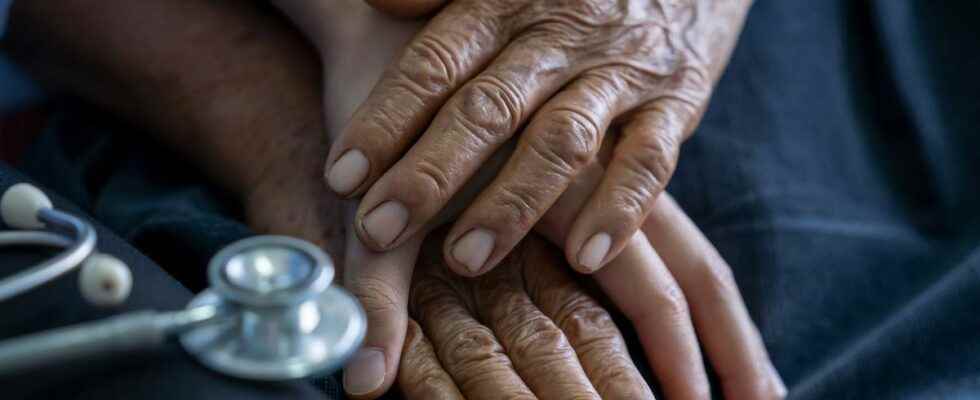Posted ,
Reading 3 mins.
The inability to walk or sleep haunts patients with advanced Parkinson’s disease. Two works published in April bring a glimmer of hope, proposing solutions so that patients can satisfy these vital needs.
In its final phase, which usually takes years to set in, Parkinson’s disease leaves the patient confined to bed or to a wheelchair.
“Orthostatic hypotension” is one of the symptoms that explains this handicap: when the person sits up, his blood pressure drops and his brain is no longer sufficiently supplied. The patient faints after a few steps.
In the case of Parkinson’s disease and related pathologies, it is a dysfunction of the nervous system that is involved. Patients no longer benefit from the reflex which normally ensures the return of sufficient blood flow to the brain.
Electrodes to walk again
Published in early April in the New England Journal of Medicine (NEJM), work has opened up an innovative path to restore hope of a little walking to advanced Parkinson’s patients. This involves implanting electrodes in the spinal cord.
This experiment was supervised by surgeon Jocelyne Bloch and neuroscientist Grégoire Courtine, who had recently made three people paralyzed following accidents walk again. The results, published in early 2022, marked the culmination of ten years of research.
This time, similar technology was used in a severely disabled patient. Strictly speaking, she was not suffering from Parkinson’s disease, but from a pathology with similar symptoms, including orthostatic hypotension.
In the case of injured paralytics, the electrode system aimed to restore the link by which the brain controls the gesture. Here, the goal is to restore the reflex which allows the good arrival of blood in the brain.
Before having this system implanted, the patient only walked a few meters before fainting. Three months later, she could walk more than 250 meters with the help of a walker, according to the report of this work led by researcher Jordan Squair.
“She is not cured, she would not run a marathon but this surgery has clearly improved her quality of life”summarized Ms. Bloch to AFP.
However, this is only an isolated case and it will be necessary to repeat the experience with other people to consider a therapeutic use, in particular with Parkinson’s patients. In the latter, it is indeed not certain that this form of hypotension can be improved by simple stimulation of the reflex in question.
An anti-insomnia pump
Another scourge to strike Parkinson’s sufferers: insomnia. Difficulty sleeping is common during the disease.
The causes are multiple. The patient is sometimes simply anxious because of the disease, or he may be awakened by uncontrolled movements. Finally, his sleep can be directly affected by the lack of dopamine, the hormone whose progressive disappearance explains Parkinson’s disease.
Treatments for insomnia, including melatonin, cannot therefore be the same for all Parkinson’s patients. But a study published Thursday in the Lancet Neurology gave a promising lead: using a pump to administer a drug, apomorphine.
This is the same system that some diabetics use to inject insulin continuously. But the study, led by neurologist Emmanuel Flamand-Roze and led by his colleague Valérie Cochen De Cock, looked at the fact of only using the pump at night.
“Thus, the constraint linked to wearing a small pump does not exist during the day”he explained to AFP.
The results are quite encouraging. Compared to patients who received a placebo, patients benefiting from this device reported a more marked improvement in their sleep.
However, the study was only carried out on a small sample – around forty participants – which means that broader work must be carried out to confirm the effectiveness of the device. Moreover, it focused on patients at an already advanced stage.
“It’s more like people who have been evolving for ten years”specified Mr. Flamand-Roze, who had already obtained initial encouraging results as to the interest of this pump in other aspects of the treatment of Parkinson’s disease.
